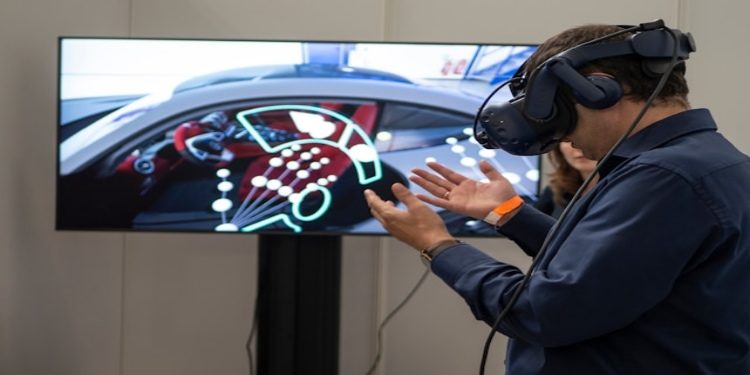Introduction to Augmented Reality (AR)
Augmented Reality (AR) is a technology that overlays digital information, such as images, videos, or 3D models, onto the real world, enhancing the user’s perception of reality. Unlike virtual reality, which creates a completely immersive experience, AR integrates digital elements into the existing environment. This technology has seen significant advancements in recent years, revolutionizing various industries and redefining the digital experience for users. In addition, if you are looking for a reliable trading platform, you may visit bit-qt.app.
Market Overview
The AR market has experienced rapid growth, driven by advancements in technology and increasing adoption across industries. According to Statista, the global AR market size was valued at $18.8 billion in 2020 and is projected to reach $340 billion by 2028. This growth is fueled by the rising demand for AR applications in gaming, retail, healthcare, and education.
Key players in the AR industry include technology giants like Apple, Google, and Microsoft, as well as innovative startups focusing on AR development. These companies are investing heavily in AR research and development, driving the evolution of AR technology and expanding its applications.
Investment Landscape
Investment in AR startups and projects has been on the rise, reflecting the growing interest in this technology. Venture capital funding for AR companies reached $1.5 billion in 2020, a significant increase from previous years. This influx of capital has enabled AR startups to innovate and bring new products and services to the market.
One notable example of successful AR investment is the acquisition of Magic Leap, an AR startup, by Google. This acquisition, valued at $500 million, highlighted the potential of AR technology and its appeal to major tech companies.
Technological Advancements
Recent advancements in AR technology have significantly improved the user experience and expanded the possibilities of AR applications. One breakthrough is the development of more advanced AR glasses, such as the Microsoft HoloLens and the Apple AR glasses, which offer more immersive and interactive experiences.
Another key advancement is the integration of artificial intelligence (AI) and machine learning (ML) algorithms into AR systems. These technologies enable AR applications to recognize and interact with the real world more intelligently, opening up new possibilities for AR in areas such as navigation, gaming, and industrial applications.
Industry Applications
AR has a wide range of applications across various industries, transforming how businesses interact with customers and how employees perform their jobs. In the retail industry, AR is being used to create virtual fitting rooms, allowing customers to try on clothes virtually before making a purchase. In healthcare, AR is used for surgical planning and training, enabling surgeons to visualize complex procedures in 3D.
In education, AR is enhancing learning experiences by providing interactive and immersive content. For example, students can use AR apps to explore historical landmarks or dissect virtual animals. In the automotive industry, AR is being used to provide real-time navigation and driver assistance, improving safety and convenience for drivers.
Challenges and Risks
Despite its potential, AR technology faces several challenges and risks that could impact its future growth. One challenge is the high cost of AR hardware, such as AR glasses, which can limit adoption, particularly among consumers. Additionally, AR technology is still relatively new, and there is a lack of standardized development tools and frameworks, making it challenging for developers to create AR applications.
Another risk is the potential for privacy and security breaches, as AR applications often require access to sensitive information, such as location data. Additionally, regulatory issues, such as data protection laws and safety regulations, could impact the development and deployment of AR technology.
Future Outlook
The future of AR technology looks promising, with continued advancements expected to drive its adoption across industries. One key trend is the integration of AR with other emerging technologies, such as 5G and the Internet of Things (IoT), which will enhance the capabilities of AR applications and enable new use cases.
Another trend is the development of more lightweight and affordable AR glasses, making AR more accessible to a wider audience. As AR technology becomes more integrated into everyday life, we can expect to see a wide range of innovative applications that will redefine how we interact with the digital world.
Conclusion
Investment in augmented reality is a strategic move that can yield significant returns, given the technology’s transformative potential and growing market demand. As AR continues to evolve and expand its applications, investors should carefully consider the opportunities and risks associated with this dynamic and rapidly evolving technology. By staying informed and proactive, investors can capitalize on the opportunities presented by the burgeoning AR market.
David Prior
David Prior is the editor of Today News, responsible for the overall editorial strategy. He is an NCTJ-qualified journalist with over 20 years’ experience, and is also editor of the award-winning hyperlocal news title Altrincham Today. His LinkedIn profile is here.













































































